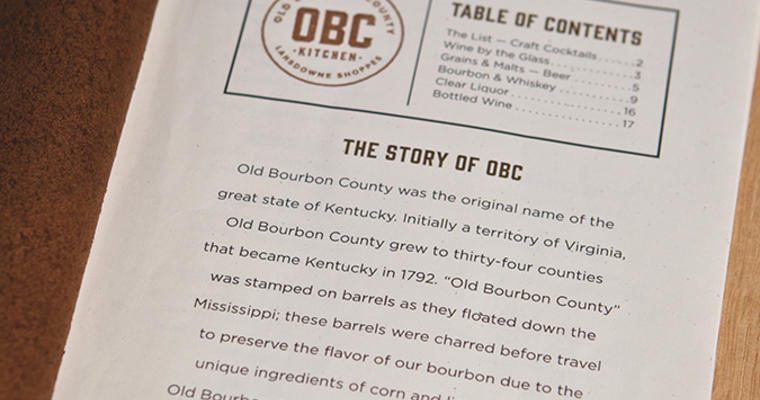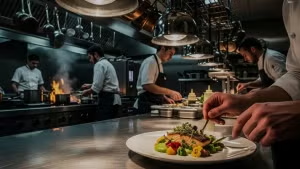Everybody loves a good story. In foodservice today, shaping and sharing your brand story is critical to success, helping differentiate your restaurant in a crowded marketplace.
“The most critical job of the restaurant brand story is to humanize the brand, particularly with younger consumers like millennials and Generation Z,” says Maeve Webster of Burlington, Vermont-based Menu Matters, a consultancy for manufacturers and operators.
Those younger generations are demanding transparency and authenticity, Webster says. They’re looking for connections and shared experiences, and they view dining experiences as a form of self-expression. Restaurants need to explore their origin, theme, or passion, she maintains.
“Your story, if it’s compelling and an honest representation, can generate buzz and create loyalty,” says Webster, who spearheaded major industry studies during her 15-plus years at Datassential.
What’s your story?
Before you can promote your brand, craft your story. “Why are you here? Why did you open? Very often, the reason independents open is a very personal, engaging story. Share that,” Webster says.
Are you using recipes given to you by your grandmother? Did you come from a farming family background? Is all your food homemade? The goal is to build an emotional bridge to your consumers. “If everything on your menu is sustainable, that needs to be the story,” she says. “Keep it focused, honest and engaging.”
How do you tell your story?
Once you’ve articulated your brand story, take it to market: menu language, signage, training, marketing materials, public relations, media relations, investor relations. She suggests maximizing marketing dollars by tying your efforts to your story. “If your story is farm-to-table, then do community events that support local farms. Have a presence at farmers’ markets. With everything around your story, ask yourself: What is the guest getting out of it?”
Heritage branding done right
Schuler’s Restaurant & Pub is a four-generation, family-owned restaurant in Marshall, Michigan, that has served customers since 1909. Nestled in small-town culture, the restaurant has a good story and knows how to tell it. “We have a strong heritage of hospitality,” says Hans Schuler, CEO and third-generation member of the Schuler family to work at the restaurant. That value shouldn’t be such a point of difference, but today it is. “We say, ‘Welcome to Schuler’s,’ and we mean it,” he says. It’s that old-fashioned cordial warmth that has helped keep the restaurant successful for 107 years and counting.
Another key to the restaurant’s success is conveying that brand story of family, heritage, tradition, and nostalgia. “Schuler’s logo, from its graphic design to its color scheme, evokes feelings of history, value, and trust,” Schuler says. “Incorporating the founding year of 1909 into the logo shows pride while identifying the restaurant as a centennial property.”
To reach younger consumers, Schuler’s leverages social media to tell its story and promote new offerings. The restaurant incorporates “1909” into its Twitter handle. And a recent Throwback Thursday on Schuler’s Facebook page shared a black-and white-photo of Win Schuler interacting with guests more than 50 years ago. In this one post, the brand succeeds in personalizing its story for consumers, sharing its narrative of nostalgia, longevity, and hospitality via a modern medium that speaks the same language as millennials and Gen Z.
Menu mainstays like Schuler’s Classic Roast Prime Rib of Beef and Schuler’s Barbeque Meatballs bring guests back time and again, delivering delicious food and a hearty serving of tradition. Those classics help anchor the story in the past, reinforcing the brand’s story of heritage.
But as strong as its story of tradition is, staffers know this famous institution needs to evolve to attract younger diners like the hugely important millennials. “We keep the best, and we marry it with today,” Schuler says. Newer menu items reflect changing flavor preferences, keeping the brand story relevant in today’s marketplace while staying true to its menu focus. And storytelling plays a role, too, as entrée staples such as Schuler’s Fish and Chips evolve—a menu callout notes the dish is now prepared with “hometown Dark Horse beer-battered Atlantic cod.”
Top ways to build your narrative
Make it relevant. It’s your story, but you’re telling it to illustrate how you serve a consumer need. Wrap up the story by explaining how it leads to a superior dining experience for guests.
Make it personal. Engage with customers on an emotional level. Use informal, but still professional language—“we,” “our,” “us.”
Make it brief. Aim for no more than three paragraphs of three sentences or less.
Make it clear. Delineate no more than two specific points of differentiation that will engage your customers on an emotional level. These can include anything from food quality to service attitude to signature dish to location.
Make it last. Make sure you can live with—and live up to—this story for a long time to come. Consumers value stability and consistency of a story over time.
Make it true. Authenticity and transparency are paramount for today’s consumer. Don’t make promises you can’t keep.
Storytelling in action
I was in a corner cafe in Los Angeles not long ago, where the owner and executive chef came out to our table to help us better understand the menu and her restaurant concept, a build-your-own grain-based bowl eatery. She spoke languidly and with care as she described her upbringing and the role she played in making and serving the family meals. Due to a scarcity of ingredients and a love of comfort food, she would create homemade bowls of steaming rice or porridge filled with vegetables she had hand-picked from the family garden. Her hands held out in the shape of a bowl, she went on to tell us about how she would ultimately open a restaurant based on this concept, because she wanted to surround herself with that taste of home and comfort, and nourish others the way she had done for her family. And that’s the story she tells her customers, with ease and authenticity.











